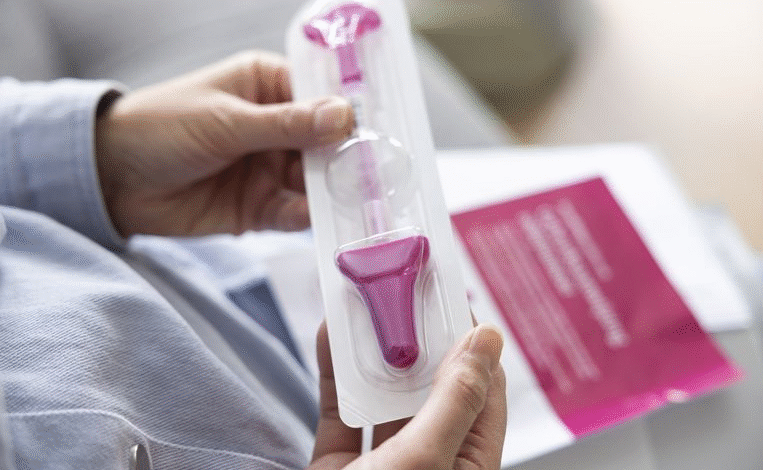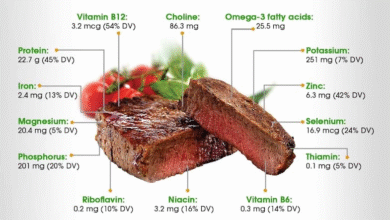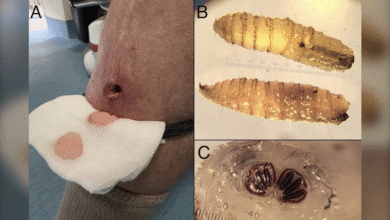At-Home Cervical Cancer Test: FDA Approves Teal Wand

The recent FDA approval of the at-home cervical cancer test marks a significant milestone in women’s healthcare, offering a new way for women to take charge of their health. This innovative self-collection device, known as the Teal Wand, provides an alternative to the conventional Pap smear, making cervical cancer screening more accessible and convenient. Designed to detect human papillomavirus (HPV), the primary cause of cervical cancer, this test empowers women aged 25 to 65 to screen for potential health risks right from the comfort of their homes. The Teal Wand has shown impressive accuracy in clinical trials, with a remarkable 96% rate in identifying cervical precancers. By introducing at-home cervical cancer tests, this development not only embraces technological advancement but also aims to increase screening rates, addressing the critical need for preventive care.
In recent advancements in healthcare, self-administered tests for cervical cancer are gaining attention, particularly through devices like the Teal Wand. These home testing kits serve as a promising solution for women seeking alternatives to traditional cervical cancer screenings, such as Pap tests, which many find uncomfortable. With the rise of HPV self-collection tests, women can now monitor their cervical health in a more private setting. This approach not only enhances comfort but also aligns with modern healthcare preferences, as the FDA continues to endorse safe and effective screening methods. As awareness grows, the adoption of these innovative tools could potentially reshape the landscape of cervical health management.
Understanding the At-Home Cervical Cancer Test: Teal Wand
The FDA’s recent approval of the at-home cervical cancer test, known as the Teal Wand, marks a groundbreaking advancement in women’s health. This innovative self-collection device allows women to gather samples safely and conveniently from home, eliminating the need for traditional in-person examinations. By providing a safe alternative to the conventional Pap smear, women can take a proactive approach to their cervical cancer screening without the discomfort or anxiety associated with office visits.
In clinical trials, the Teal Wand exhibited an impressive 96% accuracy rate in detecting precancerous conditions related to HPV. Given that human papillomavirus is responsible for nearly all cervical cancer cases, a reliable home testing option could significantly increase screening rates among women aged 25 to 65. The ability to self-collect samples comfortably at home could empower many women who may have previously postponed or avoided life-saving screenings.
The Role of HPV Self-Collection Tests in Cancer Prevention
HPV self-collection tests, such as the Teal Wand, play a crucial role in the prevention and early detection of cervical cancer. The capability of women to take charge of their health by performing tests at home can be particularly beneficial for those hesitant about visiting a healthcare provider. Studies show that a considerable percentage of women feel more inclined to follow cervical cancer screening guidelines when they can conduct tests privately at home, further emphasizing the importance of these screenings.
With an alarming number of cervical cancer diagnoses each year in the United States, effective screening methods are essential for reducing mortality rates. The Teal Wand offers a convenient solution—women can order this self-collection kit and, if necessary, follow up with medical consultations through telehealth services. Such innovations are vital in promoting regular screenings, especially for those who lack access to routine medical care.
FDA Approval of Teal Wand: A Game Changer for Women’s Health
The FDA’s endorsement of the Teal Wand signifies a transformative leap in cervical cancer screening. This approval opens up avenues for more women to engage in preventive care without the barriers often posed by traditional medical processes. Health professionals emphasize that making screening more accessible directly correlates with increased compliance among women, aiming to curb the preventable instances of cervical cancer and associated mortality rates.
In addition to its convenience, the Teal Wand also features a telehealth component, providing users with medical support throughout the screening process. This multidisciplinary approach alleviates concerns regarding the accuracy and interpretation of results, ensuring that women receive comprehensive care. The combined aspects of self-collection and professional guidance present a robust framework for enhancing women’s healthcare access.
Comparing the Teal Wand to Traditional Pap Smears
The introduction of the Teal Wand at-home test provides a viable alternative to traditional Pap smears. Historically, Pap smears have been the gold standard for cervical cancer screening; however, the discomfort and stigma surrounding this procedure often lead to decreased participation. The Teal Wand offers an empowering solution, allowing women to perform at-home testing, which can lead to increased screening rates due to its convenience and decreased anxiety associated with traditional methods.
While Pap smears are typically recommended every three years, the Teal Wand’s self-testing option provides women with more control over their healthcare schedule. The ease of ordering and conducting this test at home without the need for a clinical visit may greatly enhance compliance, making it crucial for women particularly in remote areas or those who face challenges accessing healthcare services.
Insurance Collaboration: Making At-Home Testing More Accessible
Teal Health’s collaboration with major insurance providers to enhance affordability for the Teal Wand test is a pivotal factor in promoting better cervical cancer screening compliance. With flexible payment options being emphasized, the financial concerns surrounding cervical cancer screenings may be alleviated for many women. Such partnerships ensure that more individuals can take advantage of this innovative at-home testing method, bringing necessary healthcare into the convenience of their lives.
In addition to affordability, the logistics of ordering the at-home test and receiving timely results are critical components to consider. The support provided through telehealth by medical professionals not only enhances trust in the process but also instills confidence in women that they are taking the appropriate steps towards maintaining their health. Accessible testing means that more women can undergo necessary screenings, ultimately contributing to a reduction in cervical cancer incidence.
Educational Outreach Around At-Home Cervical Cancer Screening
As the Teal Wand becomes available, it’s crucial to implement educational outreach programs that inform women about the importance of regular cervical cancer screenings. Such initiatives can provide vital information on how to use the Teal Wand, interpret results, and understand the implications of HPV testing. Empowering women with knowledge about their health choices and available technologies enhances overall awareness and encourages more proactive health management.
Additionally, community health programs can leverage the availability of the Teal Wand to collaborate with healthcare providers, promoting awareness of cervical cancer risks and the necessity of screenings. Ensuring that women are fully informed not only about the test itself but also about HPV’s role in cervical cancer can inspire a larger movement towards health consciousness and prompt action in prioritizing women’s health.
The Impact of HPV on Cervical Cancer and Detection Methods
Understanding the link between HPV and cervical cancer is vital for women as they consider their screening options. Human papillomavirus remains a leading cause of cervical cancer, with several strains being classified as high risk. Knowledge of this connection empowers women to seek regular screenings through tools like the Teal Wand while also highlighting the importance of early detection in preventing cancer development.
As awareness of HPV’s impact on women’s health grows, self-collection tests like the Teal Wand can reduce the stigma and fear associated with seeking cervical cancer screening. Through effective communication and education surrounding HPV and its implications, more women can be encouraged to take ownership of their health and routinely participate in necessary screenings that significantly lower their risk of cervical cancer.
Telehealth Support in the Cervical Cancer Screening Process
The integration of telehealth services with the Teal Wand at-home testing provides women with a robust support system that enhances their screening experience. By connecting with healthcare professionals for consultative support, users can receive guidance on interpreting their test results and determining whether further testing is needed. This approach ensures that women feel informed and supported throughout their screening process, ultimately leading to better health outcomes.
Moreover, telehealth services can expand access to healthcare professionals for women in isolated regions, where traditional gynecological services may be sparse. This model supports a comprehensive understanding of cervical health and emphasizes the importance of following up with additional tests if required. As telehealth continues to evolve, its role in enhancing access to cancer screening and education will be increasingly vital.
Future of Cervical Cancer Screening and Women’s Health Innovations
The approval of the Teal Wand indicates a promising future for cervical cancer screening and women’s health innovations. As technology continues to develop, new methods for early detection will likely emerge, focusing on increasing accessibility, affordability, and accuracy. The advancement of at-home tests is just one step in a broader movement towards utilizing innovative healthcare solutions to empower women in managing their health journeys effectively.
Furthermore, the conversation around cervical cancer screening is evolving. With platforms for discussion and resource-sharing emerging, there is a significant opportunity for increased community engagement regarding health. By fostering an environment that promotes awareness and proactive engagement in cervical health, women can contribute to early detection measures that save lives and reduce overall healthcare costs in the long run.
Frequently Asked Questions
What is the Teal Wand and how does it relate to at-home cervical cancer testing?
The Teal Wand is an at-home cervical cancer test that allows women to self-collect samples for HPV testing. Approved by the FDA, this self-collection device offers a Pap smear alternative, enabling women to perform cervical cancer screening in the comfort of their homes.
How accurate is the at-home cervical cancer test using the Teal Wand?
The at-home cervical cancer test with the Teal Wand has demonstrated a 96% accuracy rate in detecting precancerous changes during clinical trials. This high level of accuracy makes it a reliable option for women seeking cervical cancer screening.
Can the at-home cervical cancer test detect HPV?
Yes, the at-home cervical cancer test using the Teal Wand is specifically designed to detect human papillomavirus (HPV), the primary cause of nearly all cervical cancer cases. Early detection through this method can significantly reduce cervical cancer risk.
Is the Teal Wand approved by the FDA for at-home use?
Yes, the Teal Wand has received FDA approval as the first at-home cervical cancer screening test. This approval signifies its safety and effectiveness as a method for women to manage their cervical health without needing in-person visits.
How will the Teal Wand change cervical cancer screening practices?
The introduction of the Teal Wand as an at-home cervical cancer test is expected to increase screening rates, as studies indicate many women prefer self-collection due to convenience and comfort. This test serves as a critical alternative to traditional Pap smears.
What should women do if they test positive for HPV using the Teal Wand?
If women test positive for HPV using the Teal Wand, they will be referred for follow-up with a traditional Pap smear. This ensures proper diagnosis and management of cervical cancer risk.
What demographics are eligible for the at-home cervical cancer test using the Teal Wand?
The at-home cervical cancer test with the Teal Wand is intended for women ages 25 to 65 who are at average risk for cervical cancer. They can order the test through the Teal Health website once it becomes available.
How does the Teal Wand improve access to cervical cancer screening?
The Teal Wand improves access to cervical cancer screening by allowing women to conduct tests at home, thus eliminating barriers such as discomfort or access to medical facilities. The product also includes telehealth support for guidance during the process.
What are the benefits of using an at-home cervical cancer test compared to traditional screenings?
The benefits of using an at-home cervical cancer test like the Teal Wand include convenience, increased comfort, and the potential for higher screening compliance. Studies suggest that many women prefer self-collection, which could lead to improved cervical health outcomes.
When will the at-home cervical cancer test be available for purchase?
The at-home cervical cancer test using the Teal Wand is expected to be available starting in June in California, with plans to expand nationwide shortly after. Interested individuals can keep an eye on the Teal Health website for updates.
| Key Points |
|---|
| FDA has approved the first at-home cervical cancer screening test. |
| The test, Teal Wand, allows women to collect samples at home and send them for lab analysis. |
| It detects HPV, the virus responsible for most cervical cancer cases. |
| Demonstrated a 96% accuracy rate in detecting cervical precancers during trials with over 600 women. |
| 86% of participants preferred home testing due to increased likelihood of following screening guidelines. |
| Teal Health aims to provide flexible payment options and collaborates with major insurance providers. |
| Kits will initially be available in California, with plans for nationwide expansion. |
| Telehealth service supports women throughout the testing process, ensuring better access to care. |
Summary
The at-home cervical cancer test presents a groundbreaking alternative for women’s health, enabling safe and private screening from home. This innovative test not only aims to increase screening rates but also successfully facilitates early detection of cervical cancer, thereby enhancing prevention strategies effectively. With the convenience of home testing and robust support features, the at-home cervical cancer test serves as a significant advancement in promoting health awareness among women.




